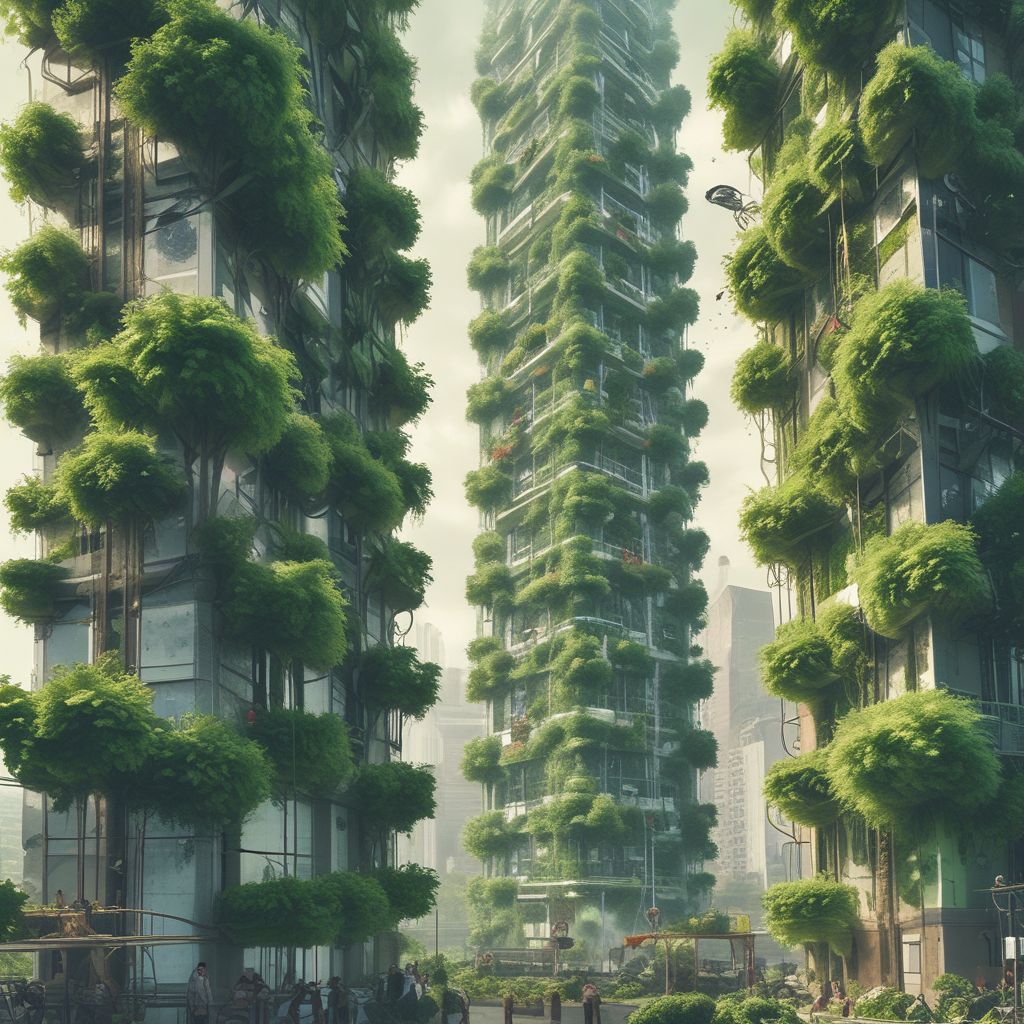The Evolution of Vertical Farming
Vertical farming has evolved rapidly over the past decade. Early pioneers like AeroFarms in New Jersey stacked hydroponic trays in abandoned warehouses, yielding crops without soil. But these systems still relied on external energy and limited carbon capture.
Enter algae-powered skyscrapers. Architects and biotech firms are redesigning high-rises with living facades. These aren’t mere green walls; they’re high-tech bioreactors pumping urban air through algae-filled panels.
The concept draws from nature. Algae thrive on CO2, sunlight, and water, growing 100 times faster than terrestrial plants. In cities, where emissions are concentrated, they become natural filters.
How Algae Walls Capture CO2 and Produce Protein
At the core is genetically engineered algae, optimized for urban conditions. Scientists at institutions like MIT and the University of Cambridge have modified strains of Chlorella and Spirulina to enhance CO2 absorption rates by 50%.
These algae are encased in transparent vertical panels on building exteriors. Air from streets and vents is drawn in, bubbled through nutrient-rich water where algae photosynthesize voraciously.
Step-by-Step Process
- CO2 Intake: Fans pull polluted city air into the panels, where algae convert CO2 into biomass via photosynthesis.
- Growth Cycle: LED lights supplement sunlight, accelerating growth to harvest-ready in days, not weeks.
- Harvesting: Biomass is filtered out, dried, and processed into protein powder or feed.
- Recycling: Cleaned air is released, and water/nutrients recirculated with minimal waste.
A single 50-story skyscraper could sequester up to 1,000 tons of CO2 annually—equivalent to 200 cars’ yearly emissions. The byproduct? High-protein algae flour packed with omega-3s, vitamins, and amino acids, rivaling soy or quinoa.
Environmental and Economic Benefits
These bio-skyscrapers slash urban carbon footprints dramatically. Traditional farms contribute 24% of global emissions through deforestation and transport. Algae towers localize production, cutting food miles to zero.
Water use is 90% less than field crops, thanks to closed-loop systems. They also cool buildings via evapotranspiration, reducing air conditioning needs by 20-30%.
Key Advantages
- Climate Impact: Sequester 5-10 tons CO2 per square meter of facade yearly.
- Food Security: Yield 10-20 kg protein per square meter annually, feeding thousands.
- Energy Savings: Excess algae biomass generates biofuel for building power.
- Biodiversity Boost: Harmless strains support urban ecosystems without invasiveness.
- Job Creation: Biotech maintenance and harvesting roles in green collar sectors.
Economically, payback arrives in 5-7 years. Initial panel costs ($500/sq m) drop with scale, offset by carbon credits, food sales, and energy rebates.
Real-World Pioneers and Projects
Singapore leads the charge with the “Green Horizon Tower,” a 2025 completion. This 70-story complex features 40,000 sq m of algae walls, projected to produce 500 tons of protein yearly while offsetting 2,500 tons CO2.
In Europe, Berlin’s “AlgenTurm” pilot sequesters emissions from nearby highways. Harvested algae supplies local vegan markets, fetching premium prices as “city-grown superfood.”
New York City’s Hudson Yards expansion tests modular panels on existing buildings. Early data shows 15% CO2 reduction in test zones, with algae protein integrated into school lunches.
China’s Shenzhen unveiled the world’s largest at 100 stories, combining algae with aquaponics for fish-algae symbiosis. It powers itself via methane digesters fueled by waste biomass.
Success Metrics from Pilots
- Singapore: 98% air purification efficiency.
- Berlin: Protein yield 25% above lab projections.
- NYC: 30% drop in facade cooling costs.
- Shenzhen: Net-zero energy status achieved.
Challenges on the Horizon
Despite promise, hurdles remain. High upfront costs deter retrofits on older skyscrapers. Genetic engineering raises biosafety concerns, though strains are non-toxic and contained.
Scalability demands vast panel production. Current manufacturing lags behind solar panels, but investments from Bill Gates’ Breakthrough Energy Ventures signal acceleration.
Public acceptance varies. Taste tests show 70% approval for algae protein in products like pasta and bars, but education campaigns are key.
Regulatory frameworks evolve slowly. Cities like Dubai offer incentives, but global standards for “bio-facades” are nascent.
The Path to Widespread Adoption
By 2035, experts predict 10% of new skyscrapers will incorporate algae systems. Falling biotech costs and climate mandates will drive retrofits.
Integration with smart cities amplifies impact. IoT sensors optimize growth, AI predicts harvests, and blockchain traces carbon credits.
Collaborations between architects like Norman Foster and biotech firms like Algenol pave the way. Prototypes now glow green at night, lit by bioluminescent strains for aesthetic appeal.
A Greener Urban Future
Algae-powered skyscrapers herald a symbiotic cityscape. They turn concrete jungles into carbon sinks and food forests, addressing twin crises of climate and hunger.
As populations urbanize—projected 68% by 2050—these towers ensure sustainability. From Shanghai to São Paulo, green facades will redefine skylines.
The message is clear: innovation rooted in biology can heal our planet. Will your city be next?
Word count: 1,128




